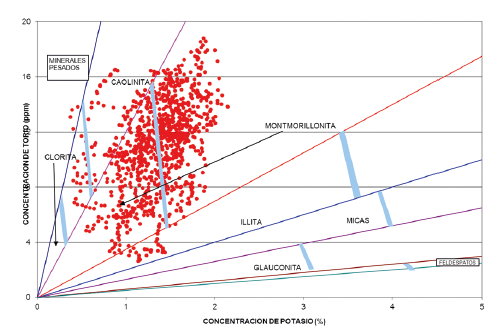Geostatistics applied to the distribution of clays, lower c reservoir, west of Venezuela

Published 2020-12-09
Keywords
- Distribution,
- geostatistical,
- shale volume,
- channel samples,
- x-ray diffraction
- variogram,
- kriging ...More
How to Cite
Copyright (c) 2020 Revista Fuentes, el reventón energético, Universidad Industrial de Santander

This work is licensed under a Creative Commons Attribution 4.0 International License.
Abstract
The study was carried out at the Lagomar Production Unit, in the Urdaneta Lama Field, in the reservoir C-5-X-18. The research work is projective and divided in six phases, establishing a methodology that allowed compiling, analyzing and interpreting information of the petrophysical property called shale volume (Vsh), through the application of geostatistical methods, to generate a model of distribution in the area. This research was carried out through X-ray diffraction (XRD) laboratory analysis on channel samples of the 13 selected wells, allowing interpreting the data, to determination of diferents clay types content (percentage). That form the Vsh present in the reservoir, obtaining four types of clay, such as: kaolinite as the largest contribution, then iIlite + esmectite, then the illite and finally the chlorite. At the same time, 25 wells that crossed the site were identified and they have conventional logs and a well that has special logs, allowing them to interpret them by means of the lithological charts of logs, with a predominance of clay such as montmorillonite, chlorite, illite and mix of these clays. The experimental variograms of each types of clay the XRD data were generated, adjusting all the curves with the potential theoretical variogram, in order to apply the Kriging estimation method, for the calculation of the percentages of each type of clay in wells with no XRD data. Finally generated the maps that represent the distribution of the clays of the C-5-X-18 reservoir.
Downloads
References
Deutsch, C (1996). “Geostatistical Reservoir Modeling Accounting for Precision and Scale of Seismic Data”. SPE 36497, Denver, Colorado, 6 p.
Debasmita, M; Schatzinger, R; Cil, M & Jill, M (1998). “An Assessment of Lateral Variability of Geological Parameters using Modal and Geostatistical Analysis of Outcrop Analog”. SPE 49280, New Orleans, Louisiana, 3 p.
Fertl, W (1988). “Determination of Volume, Type, and Distribution Modes of Clay Minerals from Well Logging Data”. Paper publicado por Atlas Wireline Services, Western Atlas International, Inc., Houston, Texas (SPE: 17145), 5 p.
Gringarten E. & Deutcch C.V. (1999) "Methodology for Variogram Interpretation and Modeling for Improved Reservoir Characterization", Universrty of Akberta, paper SPE 5654, 4 p.
Journel, A (1985). “Constrained Interpolation and Qualitative Information – The Soft Kriging Approach”, 53 – 75 pp.
Peinado A. (1996), "Geoestadística Básica", CIED, Maracaibo, Apéndice A, 12 - 18 p.
Schlunberger (2012) “Log Interpretation of Litology”. Texas, 12 – 17